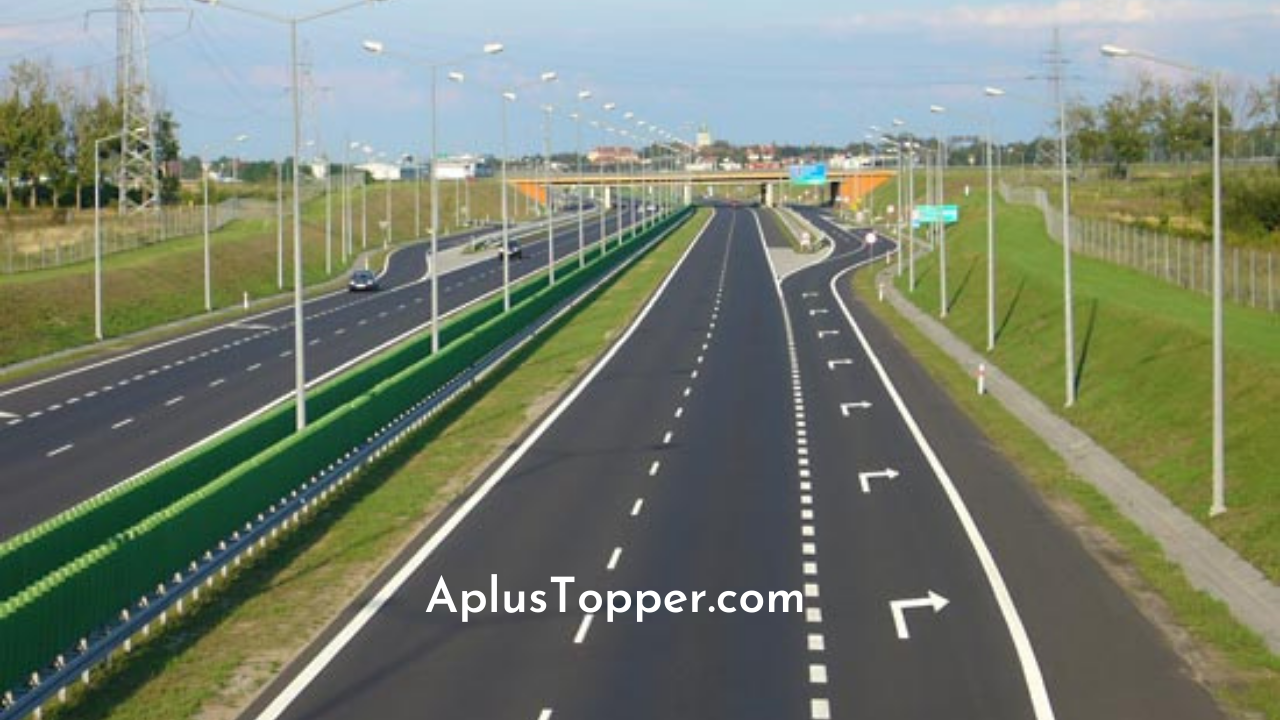Essay on Roads: Roads are now a part of everyday life and it is hard to imagine a world without them. In this essay, we shall learn about the origin of roads, their purpose, and how they continued to evolve over time.
You can also find more Essay Writing articles on events, persons, sports, technology and many more.
Where did Roads Come From?
The actual origin of roads is still disputed as many historians and anthropologists believe that the first “roads” were essentially natural pathways in the environment. Others have proposed that the first roads were nothing more than trials made by animals.
In the city of Ur in the Middle East, the streets are made from stone. These stone- paved streets have been present for 4,000 years and have survived through a number of civilizations. On the other side of the world, roads paved with corduroy have been unearthed dating to 4000 BC in Glastonbury, England. Corduroy roads are essentially made of logs, which were cut from trees to form a rough road that was useful to traverse over impassable terrain. In India, brick-paved streets appeared as early as 3000 BC in the ancient cities of Mohenjodaro and Harappa of the Indus Valley Civilization.
Roads as a Catalyst for Rise of Civilisations
Regardless, roads are a key component of modern civilization. They allow people to transport goods from one place to another, and cities can grow and change. The oldest roads were constructed in Egypt, between 2600 BC and 2200 BC, where they were made out of clay and sand. They allowed the Egyptians to transport goods from one place to another faster and easier. Modern roads were eventually built to facilitate the movement of people and goods between settlements, eventually transforming into highways for transport and communication. As time went on, roads evolved into a means of transportation. Roads connect and unite people and places. They’re used by drivers to get from one place to another, and they’re also used for pedestrians, bicyclists, emergency services, farmers to transport animals or crops, or construction equipment.
What’s the Difference Between a Road and a Highway?
Generally, the definition of roads and highways differ between countries. However, a generalisation can be made between the two: – A road can be paved or unpaved, while highways tend to be paved and much wider. Moreover, a highway typically has many lanes to accommodate a large number of vehicles, while a road has one or two lanes at the most. Highways also have higher speed limits than roads.
List of Famous Roads and Highways Around the World
Following is a list of well-known roads and highways from around the world.
India
- East Coast Road (Chennai Pondicherry Highway) – The East Coast Road, or ECR, is a highway connecting Chennai with Pondicherry. It was constructed in the 1970s and early 1980’s with the aim of providing a safe and smooth passage from Chennai to Pondicherry via Villupuram. The road began as a four-lane highway and was later expanded to six lanes in 2004.
- State Highway 39 (Visakhapatnam Araku Highway) – This highway connects the two most important cities in Andhra Pradesh namely Visakhapatnam and Araku. The highway has an excellent road-network that is ideal for travel purposes. It also has scenic beauty with many temples, gardens, and wildlife areas. Moreover, this highway is the longest in the District of Visakhapatnam.
- Mumbai – Pune Expressway (Yashwantrao Chavan Expressway) – The Mumbai-Pune Expressway is a 94.5 km long, six-lane highway that connects the cities of Mumbai and Pune in India. The expressway is flanked by the stunning ghat sections, which makes for a memorable driving experience. Moreover, the expressway has reduced travel time from Kalamboli to Kiwale by about two hours. It has also supplemented the Mumbai-Pune section of route 48 which has become accident prone and congested .
United States
- Route 66 – Route 66 is a famous historical route in the United States that spans from Chicago, Illinois to Santa Monica, California. It has been popularized in a variety of songs and movies such as “Route 66,” “Thelma & Louise,” and more. Route 66 was originally built during World War I when Chicago needed an alternative to ship goods to California.
- California State Route 1. – Route 1 in California is one of the most famous routes in the state. The road stretches from San Francisco to Los Angeles. It’s well known for its beautiful scenery and scenic drive as well as numerous attractions along the coast.
- Great River Road – The Great River Road is a scenic and historic route that runs along the Mississippi River. It has been around since the early 1800s, and it currently spans more than 4,800 kilometres across ten states. It begins in Lake Itasca in Minnesota and extends to the Gulf of Mexico in Louisiana.
Canada
- Trans-Canada Highway – The Trans-Canada Highway is a highway that extends through all 10 Canadian provinces. It is 7,476 kilometers long and carries more than 100 million people and 44 million vehicles annually. This makes it one of the longest of its types in the world.
- King’s Highway 400 (Highway 400) – Highway 400 is a 226-kilometre-long highway in the Canadian province of Ontario. It is one of two controlled-access highways that encircle Toronto, the other being Highway 401.
- Pacific Rim Highway (Highway 4) – Highway 4 is a major highway in British Columbia, Canada, connecting the southern border of the province with Alaska across the Pacific Rim Highway (Highway 97). Highway 4 is designated as part of the Trans-Canada Highway System.
United Kingdom
- A1 – The A1 is the longest numbered road in the UK, spanning 660 kilometres from London to Edinburgh. This road is a trunk route for traffic heading north and south. The A1 is also colloquially referred to as the Great North Road or simply Route One. This route provides access to major cities such as York, Sunderland and Newcastle upon Tyne.
- M1 Motorway – The M1 motorway connects London to Leeds. It is the UK’s busiest motorway and also the first inter-urban motorway to be opened to the public. The M1 was built in 1964 to provide a quicker way to travel between the two cities and it has since become one of the most travelled roads in the UK, carrying thousands of vehicles per day.
- Oxford Street – Oxford Street is a road in London, England that runs from Marble Arch to Tottenham Court Road. It is part of the A40 road and forms a section of the North-South route into the city.
France
Route Napoléon – Route Napoléon highway in France that extends from Grenoble to Grasse, covering over 321 kilometres. It marks the route that was once used by Napoléon Bonaparte during his campaigns in the 18th century. His route is adorned by a series of French Imperial Eagle statues. The road is so stunning that it is one of the top-rated drives in the world.
China
Guoliang Tunnel Road – Guoliang Tunnel Road is a road in China that cuts through the Taihang Mountains. The road links the village of Guoliang with the outside world. The road runs just for 1.2 kilometres but is extremely treacherous to drive through. At an elevation of 600 meters above sea level, the roads are flanked by deep ravines and sheer cliff drops. Moreover, the road is 3.5 meters wide, which is just barely wide enough for 2 cars.

FAQ’s on Roads Essay
Question 1.
What is a road defined as?
Answer:
Roads are defined as ways that connect one place to another. Roads can also be defined as pathways, often made of dirt or paved stone, meant for the travel of people and goods. There are many different types of roads around the world, but most roads are made of asphalt.
Question 2.
What’s the Difference Between a Road and a Highway?
Answer:
Roads are public areas that allow for transportation of people and things, while highways are public areas that allow for transportation of people and things over long distances. The major difference between a road and a highway is that a highway is paved with many lanes for vehicles, while a road can be paved or unpaved and usually one or two lanes wide.
Question 3.
Who is responsible for national highways in India?
Answer:
The National Highway Authority was established in India to manage the construction, maintenance and development of trunk roads and highways. The authority is responsible for planning, designing, constructing and maintaining roads that link major towns and cities.
